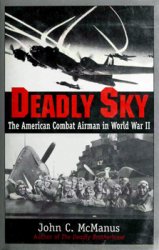It is certainly difficult to lay blame anywhere but on the French military men themselves for the chronic shortages, of time as well as of vital equipment. It is not true to say that France’s armed forces were underequipped because of the taxpayer’s meanness, nor that the cost of the Maginot Line deprived France of an army good enough to defend her.
The Maginot Line was completed in 1934 at a cost of <?30 million at the contemporary rate of exchange. Yet in 1933, 1934, and 1935, an average of 47 per cent of the total armaments credits available was left unspent by the military.
The following year, 1936, German rearmament prompted the French War Minister to ask General Gamelin, Chief of the General Staff, to submit a four-year plan for rearmament. Gamelin asked for 9 billion francs. The War Minister increased it to 14 billion. The French parliament in turn increased this by 20 per cent to allow for devaluation of the franc. In 1938 another 12 billion francs were allotted to the military program and, as 1939 began, yet another 11 billion francs. One French military historian. Colonel A. Goutard, says of this period, “The army was never refused any money.”
After 1943 the number of motor vehicles was decreased and horse vehicles increased,
A division of this size would normally require every day 53 tons of hay and oats, 54 tons of food (including cooking fuel), 20 tons of petrol, 1 ton of lubricants, 10 tons of ordnance stores, and 12 tons of various other stores. It would also require ammunition and baggage.
Need. At the outbreak of war, the French Army did not have any antitank mines at all and there were very few antitank or antiaircraft guns.
The French Army was short of antiaircraft guns because the army had not asked for them. Few tanks and even fewer bombing aircraft were fitted with radio, which lessened their effectiveness in the sort of war they were about to fight. The army’s Commander in Chief had not even bothered to equip his own HQ with radio.
There was a grave shortage of antitank guns in the French Army, but in the period up to May 1940, the French were still exporting such guns. Eight hundred and thirty 2.5 cm antitank guns and 500 artillery pieces, with ammunition, were exported on the eve of the German attack. Of the last 500 Renault R35 tanks manufactured up to May 1940, nearly half went for export. Even after the German victory in Poland, France’s Inspector General of Tanks rejected any suggestion that such a blitzkrieg could defeat France. He repeated his contention that the tank was solely an infantry-support weapon.
The reason that tank units would remain a subordinate arm, argued the experts, was the excellence of the modem antitank gun and the antitank mine. This was also the popular argument against forming any armored divisions, or what the Revue dlnfanterie as late as 1939 still derisively called a “cavalcade of tanks.” At this time, France had no
Armored divisions (apart from the tank-equipped cavalry divisions), no antitank mines, and precious few antitank guns either.
Even today it is still argued that the armored division is only useful as a weapon of aggression. But the armored division proved to be the best sort of force with which to counter an armored attack.
Generaloberst Wilhelm Ritter von Leeb, German army group commander in both the Polish and Western campaigns, was one of the world’s foremost authorities on defensive warfare. In 1936 he wrote an article and later a book on the subject {Die Abwehr). “Operative defense,” he wrote, “must meet the threat of offensive by using the same weapons and the same means.” It echoed what Colonel de Gaulle had already written in his book, but the French Army would not believe it.
The Battle
For the River Meuse
“The frontiers of nations are either large rivers, or chains of mountains, or deserts. Of all these obstacles to the march of an army, deserts are the most difficult to surmount; mountains come next; and large rivers hold only the third rank."
Nlike the Polish campaign, the German thrust through the Ardennes in Belgium to the Channel coast of France in May 1940 was accomplished by a concentrated armored and motorized army and remains the only true example of blitzkrieg in the history of warfare.
For the first time, tanks shattered an enemy front by shock action, and then, instead of following the small encirclements prescribed by the Kesselschlacht theory, plunged deep into the heart of France. No effort was wasted putting a bullet into the “brain” represented by military staffs or capturing Allied army headquarters. Instead, Guderian sped westward, simply severing communications and frightening the whole population to such an extent that all resistance to him was undermined and the frailty of his own extended force was never truly tested. Blitzkrieg theory was entirely vindicated. In one terrible Whitsun
Author’s note. It may be helpful for readers to have here an easy reference to the German High Command in 1939/1940




 World History
World History









